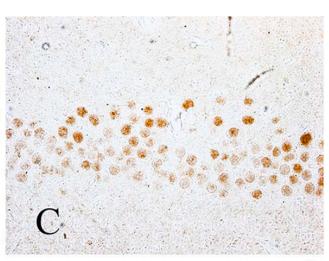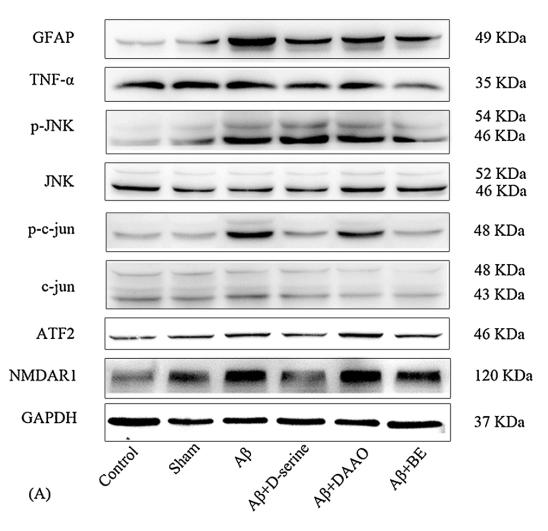ATF2 Antibody - #AF6176
| Product: | ATF2 Antibody |
| Catalog: | AF6176 |
| Description: | Rabbit polyclonal antibody to ATF2 |
| Application: | WB IHC IF/ICC IP |
| Cited expt.: | WB, IHC |
| Reactivity: | Human, Mouse, Rat |
| Prediction: | Zebrafish, Bovine, Horse, Sheep, Rabbit, Dog, Chicken, Xenopus |
| Mol.Wt.: | 52kDa; 55kD(Calculated). |
| Uniprot: | P15336 |
| RRID: | AB_2835062 |
Product Info
*The optimal dilutions should be determined by the end user. For optimal experimental results, antibody reuse is not recommended.
*Tips:
WB: For western blot detection of denatured protein samples. IHC: For immunohistochemical detection of paraffin sections (IHC-p) or frozen sections (IHC-f) of tissue samples. IF/ICC: For immunofluorescence detection of cell samples. ELISA(peptide): For ELISA detection of antigenic peptide.
Cite Format: Affinity Biosciences Cat# AF6176, RRID:AB_2835062.
Fold/Unfold
Activating transcription factor 2; Activating transcription factor 2 splice variant ATF2 var2; ATF 2; Atf-2; Atf2; ATF2 protein; ATF2_HUMAN; cAMP Response Element Binding Protein 2; cAMP response element binding protein CRE BP1; cAMP response element-binding protein CRE-BP1; cAMP responsive element binding protein 2, formerly; cAMP-dependent transcription factor ATF-2; cAMP-responsive element-binding protein 2; CRE BP1; CRE-BP; CREB 2; CREB-2; CREB2; CREBP1; Cyclic AMP dependent transcription factor ATF 2; Cyclic AMP-dependent transcription factor ATF-2; Cyclic AMP-responsive element-binding protein 2; D130078H02Rik; D18875; HB 16; HB16; Histone acetyltransferase ATF2; MGC105211; MGC105222; MGC111558; MGC142504; mXBP; MXBP protein; Tg(Gzma-Klra1)7Wum; TREB 7; TREB7;
Immunogens
A synthesized peptide derived from human ATF2, corresponding to a region within N-terminal amino acids.
- P15336 ATF2_HUMAN:
- Protein BLAST With
- NCBI/
- ExPASy/
- Uniprot
MKFKLHVNSARQYKDLWNMSDDKPFLCTAPGCGQRFTNEDHLAVHKHKHEMTLKFGPARNDSVIVADQTPTPTRFLKNCEEVGLFNELASPFENEFKKASEDDIKKMPLDLSPLATPIIRSKIEEPSVVETTHQDSPLPHPESTTSDEKEVPLAQTAQPTSAIVRPASLQVPNVLLTSSDSSVIIQQAVPSPTSSTVITQAPSSNRPIVPVPGPFPLLLHLPNGQTMPVAIPASITSSNVHVPAAVPLVRPVTMVPSVPGIPGPSSPQPVQSEAKMRLKAALTQQHPPVTNGDTVKGHGSGLVRTQSEESRPQSLQQPATSTTETPASPAHTTPQTQSTSGRRRRAANEDPDEKRRKFLERNRAAASRCRQKRKVWVQSLEKKAEDLSSLNGQLQSEVTLLRNEVAQLKQLLLAHKDCPVTAMQKKSGYHTADKDDSSEDISVPSSPHTEAIQHSSVSTSNGVSSTSKAEAVATSVLTQMADQSTEPALSQIVMAPSSQSQPSGS
Predictions
Score>80(red) has high confidence and is suggested to be used for WB detection. *The prediction model is mainly based on the alignment of immunogen sequences, the results are for reference only, not as the basis of quality assurance.
High(score>80) Medium(80>score>50) Low(score<50) No confidence
Research Backgrounds
Transcriptional activator which regulates the transcription of various genes, including those involved in anti-apoptosis, cell growth, and DNA damage response. Dependent on its binding partner, binds to CRE (cAMP response element) consensus sequences (5'-TGACGTCA-3') or to AP-1 (activator protein 1) consensus sequences (5'-TGACTCA-3'). In the nucleus, contributes to global transcription and the DNA damage response, in addition to specific transcriptional activities that are related to cell development, proliferation and death. In the cytoplasm, interacts with and perturbs HK1- and VDAC1-containing complexes at the mitochondrial outer membrane, thereby impairing mitochondrial membrane potential, inducing mitochondrial leakage and promoting cell death. The phosphorylated form (mediated by ATM) plays a role in the DNA damage response and is involved in the ionizing radiation (IR)-induced S phase checkpoint control and in the recruitment of the MRN complex into the IR-induced foci (IRIF). Exhibits histone acetyltransferase (HAT) activity which specifically acetylates histones H2B and H4 in vitro. In concert with CUL3 and RBX1, promotes the degradation of KAT5 thereby attenuating its ability to acetylate and activate ATM. Can elicit oncogenic or tumor suppressor activities depending on the tissue or cell type.
Phosphorylation of Thr-69 by MAPK14 and MAPK11, and at Thr-71 by MAPK1/ERK2, MAPK3/ERK1, MAPK11, MAPK12 and MAPK14 in response to external stimulus like insulin causes increased transcriptional activity. Phosphorylated by PLK3 following hyperosmotic stress. Also phosphorylated and activated by JNK and CaMK4. ATM-mediated phosphorylation at Ser-490 and Ser-498 stimulates its function in DNA damage response. Phosphorylation at Ser-62, Thr-73 and Ser-121 activates its transcriptional activity. Phosphorylation at Thr-69 or Thr-71 enhances its histone acetyltransferase (HAT) activity.
Nucleus. Cytoplasm. Mitochondrion outer membrane.
Note: Shuttles between the cytoplasm and the nucleus and heterodimerization with JUN is essential for the nuclear localization. Localization to the cytoplasm is observed under conditions of cellular stress and in disease states. Localizes at the mitochondrial outer membrane in response to genotoxic stress. Phosphorylation at Thr-52 is required for its nuclear localization and negatively regulates its mitochondrial localization. Co-localizes with the MRN complex in the IR-induced foci (IRIF).
Ubiquitously expressed, with more abundant expression in the brain.
The nuclear export signal 1 (N-NES) negatively regulates its nuclear localization and transcriptional activity.
Belongs to the bZIP family. ATF subfamily.
Research Fields
· Environmental Information Processing > Signal transduction > MAPK signaling pathway. (View pathway)
· Environmental Information Processing > Signal transduction > cGMP-PKG signaling pathway. (View pathway)
· Environmental Information Processing > Signal transduction > PI3K-Akt signaling pathway. (View pathway)
· Environmental Information Processing > Signal transduction > TNF signaling pathway. (View pathway)
· Human Diseases > Substance dependence > Cocaine addiction.
· Human Diseases > Substance dependence > Amphetamine addiction.
· Human Diseases > Substance dependence > Alcoholism.
· Human Diseases > Infectious diseases: Viral > Hepatitis B.
· Human Diseases > Infectious diseases: Viral > Influenza A.
· Human Diseases > Infectious diseases: Viral > HTLV-I infection.
· Human Diseases > Infectious diseases: Viral > Epstein-Barr virus infection.
· Human Diseases > Cancers: Overview > Viral carcinogenesis.
· Organismal Systems > Aging > Longevity regulating pathway. (View pathway)
· Organismal Systems > Circulatory system > Adrenergic signaling in cardiomyocytes. (View pathway)
· Organismal Systems > Nervous system > Dopaminergic synapse.
· Organismal Systems > Endocrine system > Insulin secretion. (View pathway)
· Organismal Systems > Endocrine system > Estrogen signaling pathway. (View pathway)
· Organismal Systems > Endocrine system > Thyroid hormone synthesis.
· Organismal Systems > Endocrine system > Glucagon signaling pathway.
· Organismal Systems > Endocrine system > Aldosterone synthesis and secretion.
· Organismal Systems > Endocrine system > Relaxin signaling pathway.
References
Application: IHC Species: mouse Sample: hippocampus
Application: WB Species: mouse Sample: hippocampus
Restrictive clause
Affinity Biosciences tests all products strictly. Citations are provided as a resource for additional applications that have not been validated by Affinity Biosciences. Please choose the appropriate format for each application and consult Materials and Methods sections for additional details about the use of any product in these publications.
For Research Use Only.
Not for use in diagnostic or therapeutic procedures. Not for resale. Not for distribution without written consent. Affinity Biosciences will not be held responsible for patent infringement or other violations that may occur with the use of our products. Affinity Biosciences, Affinity Biosciences Logo and all other trademarks are the property of Affinity Biosciences LTD.


